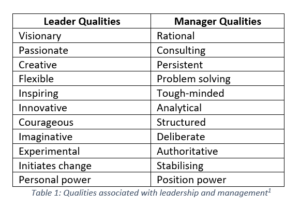What is Business Agility
Success today requires the agility and drive to constantly rethink, reinvigorate, react, and reinvent. – Bill Gates
Business agility is not about rolling out New Ways of Working (NWOW) or Agile methods via a ceremony, but it is about business analysis capability to continually assess the market needs & being able to reshape & remodel an organisation to meet these needs.
A generation ago, a “Kodak moment” meant something that was worth saving and savouring. Today, the term increasingly serves as a corporate bogeyman that warns executives of the need to stand up and respond when disruptive developments encroach on their market. – Scott D. Anthony
As we are entering the 5th Industrial revolution, the age of software, we can see that business agility and software engineering excellence are paramount for organisational success.
Today six of the top organisations in the world are technology companies and four were founded by software engineers. It is not surprising to predict that those organisations that master software engineering in the next decade will survive & thrive, while those that don’t will flounder or dwindle.
Even traditional manufacturing companies such as car manufactures are being disrupted. The electric car now utilise over 1 million lines of code & it is predicted that the autonomous car will require over 1 billion lines of code. Car manufactures will employ more software engineers, business analysts, testers than production line workers in five years time.
How do you improve software initiatives? Are you taking control of your software engineering or are you only using cookie cutter New Ways of Working (NWOW) for Agile transformations?
Connecting software initiatives to business outcomes through value streams is the key. Success can only be driven by the market that drives the reshaping of the business. If you have no connection between your delivery squads and business success, you will inevitably fail.
We trace from market analysis, value streams and delivery backlogs to make sure that business agility is realised fully. Feature driving, compliance driving, user ability, or low defect driven are measured to enable real business agility for a competitive advantage.
Exceptional business analysis is the key to successful business transformation for the future uncertainty. The best way to predict and lead the future is to create it.
- “Increased ROI: Business analysis keeps the focus on the value delivery to the customer. Enabling organizations to better define products with business analysis to deliver the right outcome that meets customers needs and eliminate requirements with minimal value.
- Increased success rate: 71% of failed software projects can be traced to poor requirements – CIO Magazine, 2006. Mitigate the risk of failed initiatives with business analysis throughout all planning levels and prioritize implementation of requirements with the most potential benefit to the customer.
- Reduced costs: Better defining the product and focus on the right requirements eliminates unnecessary changes or rework with logical and orderly decision-making, tailoring and aligning solutions to the business or customer needs.
- Gain competitive advantage: Accelerate product delivery and be the first to market to gain market share by creating a clear roadmap from the current to future states and building a consensus among stakeholders”. IIBA
Here’s the thing about exceptional business analysis
Business Analysts help your company to think about the “why” before going ahead with a strategy, which will helps prevent technology initiatives from providing little or no value to your organisation.
Here’s an example of exceptional business analysis. A client sought a solution to manage their approval process and documents. These were associated with their major energy capital projects, having a value of up to $100 million.
We analysed the business process automation, mapped the future state processes, and explored the business and functional requirements through a series of stakeholder workshops. This was achieved by using aspects of our methodology and customising templates from our Business Analysis Centre of Excellence (BACOE)
Based on these documented processes and requirements, we developed an automated workflow solution.
The outcomes of the process automation solution were:
- Increased consistency of the approval process
- An automated audit trail for the approvals
- An increase in document tracking, resulting in a greater efficiency with approvals
- Reduced time spent on approvals by eliminating manual approvals
- Reduced resource wastage on printing
In the final analysis, we found that by minimising the delays for approvals, this reduced the external contract resources required for approval processes. Within six months, the cost of developing the solution was paid for by the benefits of the automated workflow.
An exceptional Business Analyst requires a unique skillset that many senior executives have never experienced. However, you need to engage in proper business analysis to provide a greater chance of transformation success.
As increasingly competitive organisations look to become more innovative to survive and prosper with technology, business analysis is critical.
If you want to deliver better products & services to customers, and not to become a “Kodak moment” then let us help you to improve your software initiatives!
Copyright © 2021 www.business-analysis.com.au






